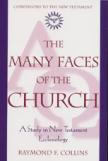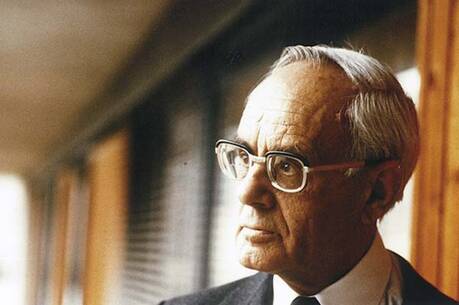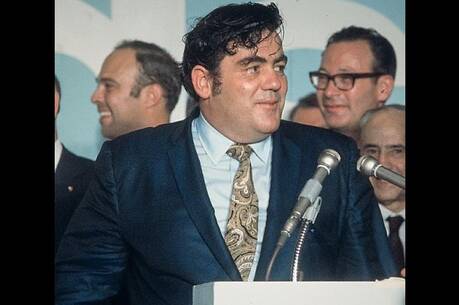The First Families
One might approach this book as a field guide to the multiple species of church or early Christian assembly to be found in the New Testament. The text remains rooted in the world of first-century Christianity. The Rev. Raymond Collins, professor of New Testament at The Catholic University of America, is the author of the commentaries 1 Corinthians (Liturgical Press, 1999) and 1 & 2 Timothy and Titus (Westminster, 2002). The former initiates the metaphorical tradition of understanding the church as body of Christ. The latter fixes the formal offices in local churches as bishops and deacons or presbyters.
Just as familiar birds are often buried somewhere in the middle of the guide, so too familiar topics appear in The Many Faces of the Church only after more foundational categoriesfor example, church as the assembly of those called by God and as a household group, fictive family, bound to other members by ties of love. Often the men and women referred to as leaders in the New Testament have no specific title. Their tasks of oversight or admonishing or evangelizing serve the community as a whole. All believers can admonish and support one another in the tasks of faith and love.
Discussion questions at the end of each chapter ask readers to apply this information to their own experiences of church in the 21st century. Readers who pick up The Many Faces of the Church on their own rather than as a text assigned for class or as a book-group project may be disoriented by its structure. Since the Pauline epistles were written before the Gospels and Acts, Father Collins opens with the earliest of these, 1 Thessalonians. He devotes six chapters to language and metaphors used for church as well as church organization in letters by Paul and his later associates. Then one begins again with the earliest Gospel, Mark, and proceeds through the others. The Johannine letters and Revelation are tacked on to the final chapter on John.
Collins omits some important witnesses, like Hebrews, whose images have shaped our visions of liturgical priesthood, or the Jewish Christian assembly in James. He treats others only in passing, such as the church of resident aliens, the minority that must endure verbal and other forms of abuse in 1 Peter or the vigorous opposition to both Roman imperialism and Christians who seek to accommodate to the local culture in the Book of Revelation. The many in the book’s title should not be confused with all. This book is neither a comprehensive survey of New Testament ecclesiology nor a distillation of normative theological principles.
Father Collins’s penultimate sentence indicates what the reader should expect to gain from working through this material: Ultimately the New Testament is a mosaic of different images of the church, not only in the various metaphors that are used to describe communities of believers but also in the different ways that the inspired authors experienced and spoke of the church. By focusing on the Pauline epistles, the Gospels and Acts, the author covers the most familiar liturgical texts. But he asks readers to reflect on the historical and social context of each writing. As a result, such big issues as the role of women, the forms of worship, church offices and apostolic (or Petrine) leadership are discussed in every chapter.
A well-organized index of subjects should assist those who want to study a particular topic. In some cases, such as women, it is necessary to look under the names of individual women as well as the official index entry. Reflection on the church as it emerges within the household patterns of ancient society binds a number of the chapters together. It reminds readers that the church was not a centralized, prepackaged franchise set up by Jesus, but the body of Christ growing through the efforts of all its members. This book is part of a series called Companions to the New Testament. But unlike other volumes in the series, Many Faces lacks a bibliography of Further Readings. The book’s content, however, makes it an excellent companion for a course in ecclesiology or for a series of parish discussions.
Father Collins has provided just the sort of balanced vision we need as we seek to build up the church in a time of crisis.
This article also appeared in print, under the headline “The First Families,” in the August 16, 2004, issue.








